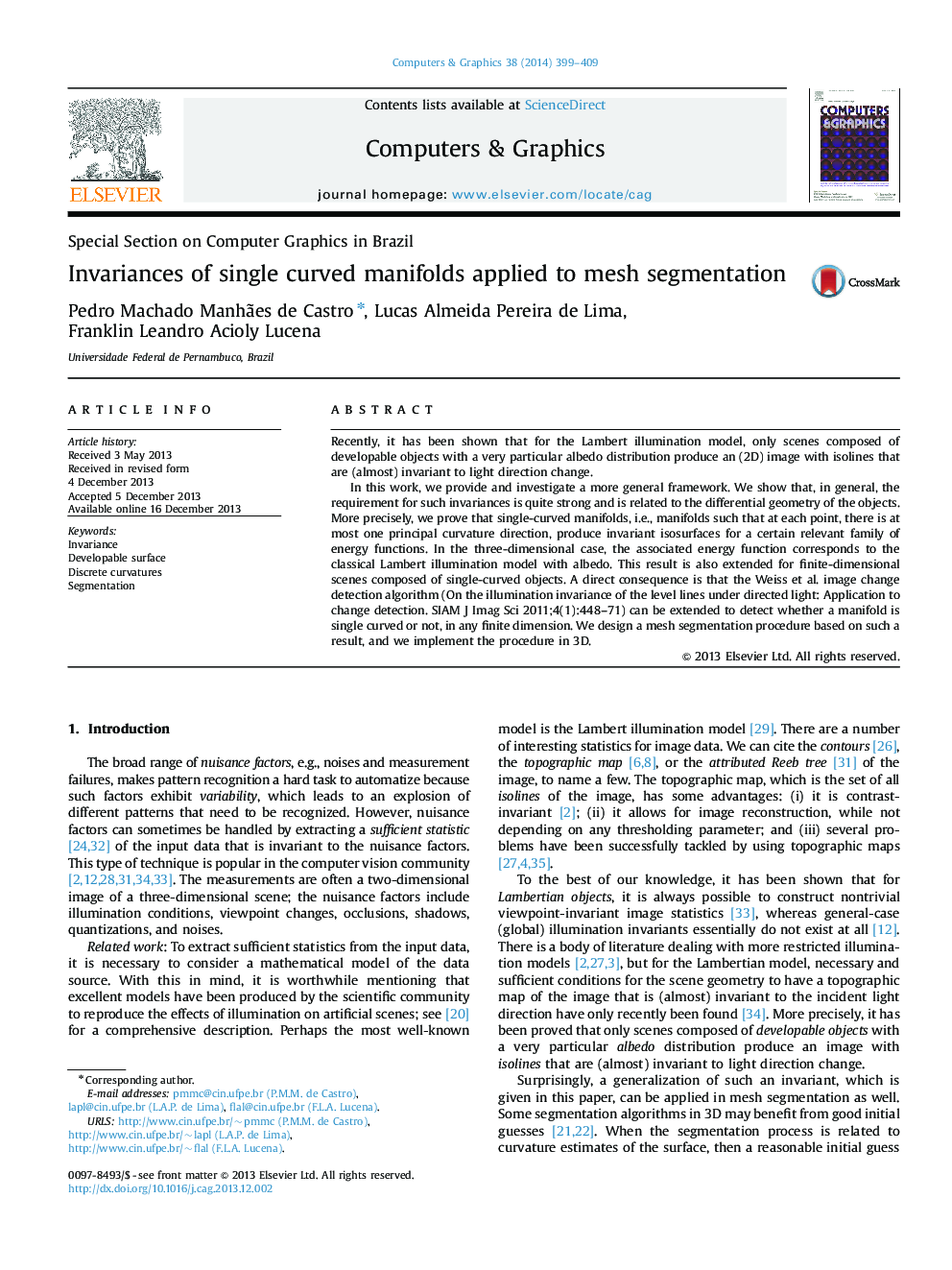| Article ID | Journal | Published Year | Pages | File Type |
|---|---|---|---|---|
| 441919 | Computers & Graphics | 2014 | 11 Pages |
•We provide an invariance result for single-curved manifolds.•This result is generalized for piecewise single-curved manifolds.•We segment “likely developable” parts of a surface approximated by a mesh.
Recently, it has been shown that for the Lambert illumination model, only scenes composed of developable objects with a very particular albedo distribution produce an (2D) image with isolines that are (almost) invariant to light direction change.In this work, we provide and investigate a more general framework. We show that, in general, the requirement for such invariances is quite strong and is related to the differential geometry of the objects. More precisely, we prove that single-curved manifolds, i.e., manifolds such that at each point, there is at most one principal curvature direction, produce invariant isosurfaces for a certain relevant family of energy functions. In the three-dimensional case, the associated energy function corresponds to the classical Lambert illumination model with albedo. This result is also extended for finite-dimensional scenes composed of single-curved objects. A direct consequence is that the Weiss et al. image change detection algorithm (On the illumination invariance of the level lines under directed light: Application to change detection. SIAM J Imag Sci 2011;4(1):448–71) can be extended to detect whether a manifold is single curved or not, in any finite dimension. We design a mesh segmentation procedure based on such a result, and we implement the procedure in 3D.
Graphical abstractFigure optionsDownload full-size imageDownload high-quality image (225 K)Download as PowerPoint slide
